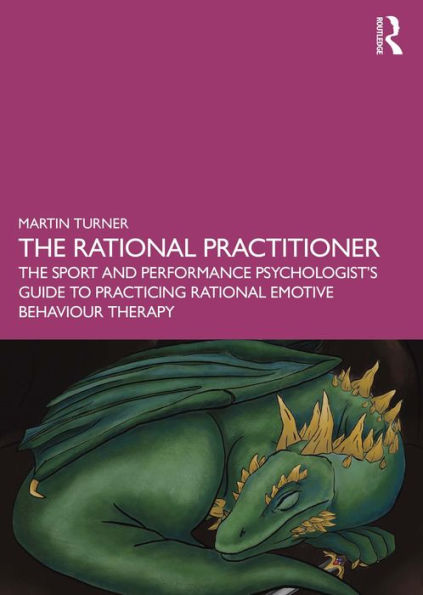Sport and exercise psychology has grown exponentially as an academic discipline and profession in the past decade. The dominant approach to sport and exercise psychology practice is the cognitive-behavioural approach that stems from cognitive behavioural therapies (CBTs). CBTs are the most widely used counselling approaches in the world. Through this approach developed rational emotive behaviour therapy (REBT), a cognitive-based theory and therapy that incorporates many of the techniques that defines CBTs to this day (e.g., cognitive restructuring, rehearsal, imagery, self-talk).
The Rational Practitioner: The Sport and Performance Psychologist’s Guide to Practicing Rational Emotive Behaviour Therapy develops innovative concepts that are particular to the performance milieu, whilst sticking rigorously to core theory. This book is fundamental to applied practice and offers practitioners, scholars, and researchers of sport psychology and REBT, theoretical and detailed practical information from an experienced and qualified sport and exercise psychologist.
This book provides a comprehensive portrayal of REBT applied within sport and performance and is key reading for current and trainee sport and exercise psychologists, but also to psychologists from other disciplines who wish to work with athletes and other performers.
Sport and exercise psychology has grown exponentially as an academic discipline and profession in the past decade. The dominant approach to sport and exercise psychology practice is the cognitive-behavioural approach that stems from cognitive behavioural therapies (CBTs). CBTs are the most widely used counselling approaches in the world. Through this approach developed rational emotive behaviour therapy (REBT), a cognitive-based theory and therapy that incorporates many of the techniques that defines CBTs to this day (e.g., cognitive restructuring, rehearsal, imagery, self-talk).
The Rational Practitioner: The Sport and Performance Psychologist’s Guide to Practicing Rational Emotive Behaviour Therapy develops innovative concepts that are particular to the performance milieu, whilst sticking rigorously to core theory. This book is fundamental to applied practice and offers practitioners, scholars, and researchers of sport psychology and REBT, theoretical and detailed practical information from an experienced and qualified sport and exercise psychologist.
This book provides a comprehensive portrayal of REBT applied within sport and performance and is key reading for current and trainee sport and exercise psychologists, but also to psychologists from other disciplines who wish to work with athletes and other performers.

The Rational Practitioner: The Sport and Performance Psychologist's Guide To Practicing Rational Emotive Behaviour Therapy
306
The Rational Practitioner: The Sport and Performance Psychologist's Guide To Practicing Rational Emotive Behaviour Therapy
306Related collections and offers

Product Details
| ISBN-13: | 9781000816815 |
|---|---|
| Publisher: | Taylor & Francis |
| Publication date: | 12/26/2022 |
| Sold by: | Barnes & Noble |
| Format: | eBook |
| Pages: | 306 |
| File size: | 10 MB |
